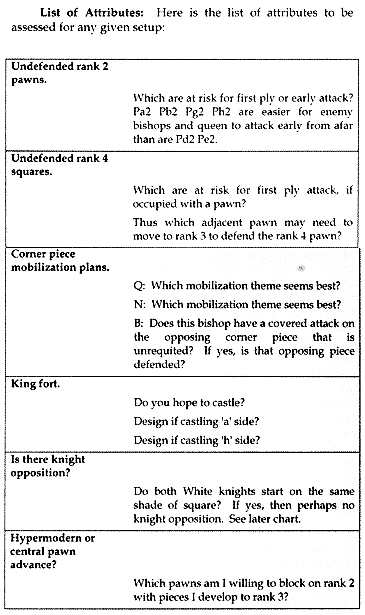Since there is no way I can ignore the mention of my name in a printed book, I'll come back to the subject in another post. [...] I have at least two posts to write: a continuation of 'Promise of Chess960' and a reaction to Milener's epilogue.
In a section of his epilogue titled 'Mark Weeks and GeneM Disagree', Milener summarized our disagreement in two bullets:-
1. Disagree about Corner Bishops
2. Disagree about 'Random'
I have nothing particularly new to say about either of these topics. About the first, I've posted several times:-
- The Myth of the Corner Bishop (June 2012)
- The Kramnik Formation (March 2015)
- The Double Kramnik Formation (ditto)
About the second, which Milener covers in a section of his epilogue titled 'Changed My Mind: "Random" Is Bad' I've posted even more, usually in passing. See, for example:-
- Not Everyone Likes Chess960 (December 2011)
Moving on to more interesting topics, in one of the end notes to his epilogue Milener mentions the 2016 Carlsen - Karjakin match:-
A World Chess Championship match was held between M. Carlsen - S. Karjakin in 2016/November. After the first seven games were drawn, Karjakin won game 8 when Carlsen recklessly pressed in a draw-ish endgame. Even though a third of the match remained, everyone knew that there might not be enough games left for Carlsen to generate a win and tie the match. That rigid reality sucks excitement from these chess matches. For comparison, imagine that only one of the first eight games ended in a draw, as in nearly every other sport.
While I'm writing this post, the 2018 Carlsen - Caruana World Championship match has reached game 11 out of 12 regulation games. The first ten games were all drawn. This apparent bloodlessness has led to the usual handwringing that something has to be done to improve professional chess. It doesn't matter how artistic or creative the individual games might be, an event is judged by its final score. Spotted on Facebook: Karjakin, during the live commentary..., from the challenger in the 2016 match:-
Karjakin, during the live commentary of #CarlsenCaruana, game 6, on a Russian "Match TV" channel: "Indeed, the classical chess has already been... no, of course by no means has it been exhausted or become boring... but... there is some sort of tiredness, so to speak. We have just seen this today – Black can equalise very rapidly. And at times, indeed, one would like to play for fun. And the fun is... talking of the classic rules, it's the rapid and blitz; while talking about experimenting, #FischerChess is an extremely interesting game which has not been researched yet -- the players have to think from the very first moves. Maybe, in the long term – let's say in the coming 20 years – I think there might be a massive transition to #FischerChess. In some time, when it's entirely... when the theory and powerful engines simply force this transition."
That Facebook post was created by Andrey Deviatkin, also seen on this blog in 'The Essence and the Rules of Chess' (June 2017). Instead of a 'massive transition', perhaps some sort of an evolution is possible. How do we get from here to there?

